Nvidia Drive Thor Could Be The Ultimate Self-Driving Car Chip

- Nvidia's latest Thor chip represents a 4x performance boost over Orin
- Nvidia feels so strongly about Thor that it has shelved the Atlan platform before launch
- Nvidia has build a chip that can power both an infotainment system and handle self driving at the same time
Nvidia has announced the next generation of its self-driving car platform -- Nvidia Drive Thor which is the successor to Nvidia Drive Orin. Thor production will start only in 2025 and its main claim to fame is that it will replace the need for a multitude of chipsets that are currently used -- as cars often need a separate chip for autonomous driving or ADAS, a separate chip to power infotainment systems and a separate chip to control core car functions. This software agnostic platform will unify everything under one chipset architecture.
Nvidia is so gung-ho about Thor that it will be superseding the Drive Atlan platform in its portfolio. Atlan is now being scrapped as Nvidia is now focussing on Thor which according to Nvidia CEO and founder Jensen Huang has 2,000 teraflops of performance which will be 2x in terms of compute to the Atlan chipset.
Nvidia believes the fact Thor can replace other chips and unify all use cases under one architecture will provide cost benefits to customers. The release of software updates over the air will also become easier as right now software engineers have to write code for differing chipset platforms and integrate them and then release updates. This is a slow, in-efficient form of releasing updates something that does not happen in the space of smartphones or PCs.
“If we look at a car today, advanced driver assistance systems, parking, driver monitoring, camera mirrors, digital instrument cluster and infotainment are all different computers distributed throughout the vehicle,” said Nvidia’s vice president of automotive, Danny Shapiro.
“In 2025, these functions will no longer be separate computers. Rather, Drive Thor will enable manufacturers to efficiently consolidate these functions into a single system, reducing overall system cost,” he added.
Nvidia also has many B2B customers that have software-defined fleets. Customers like Volvo have already said that their autonomous driving capabilities will be based on Nvidia Drive Orin, in the future, this will almost certainly mean that in the future Volvo will be using Thor, which is now the anointed successor to Orin.
Right now, Nvidia loses a lot of ground to Qualcomm as many automakers choose Qualcomm’s Snapdragon cockpit platform to power their infotainment systems. In the space of autonomous driving, Nvidia’s solutions are widely appreciated with even Mercedes Benz adopting them but they have stiff competition from Intel’s MobilEye which is the market leader. On the low-end Nvidia loses ground to Qualcomm as almost every car needs chips for infotainment systems and at the high end it loses to MobilEye. This unification is Nvidia’s solution to counter Qualcomm and MobilEye.
Already, Geely-owned Zeekr has announced that it will be the first to use Thor. But Zeekr is an early adopter of many technologies including CATL’s new batteries. It is also a China-only brand, but the good news for Nvidia is that its next-generation cars will start using Thor from 2025 onwards.
In China, Nvidia has many customers like XPeng which is often called the Tesla of China. Its G9 SUV is already using the Drive Orin platform for ADAS. Now XPeng has even started a pilot programme for city navigated guided pilot ADAS on its P5 sedan and this will also eventually be rolled out on the G9. There is a robotaxi service called QCraft in China which will have its fleet powered by Orin and there are many more customers like Baidu’s JiDU Auto, Nio, and even Polestar.
But the problem for Nvidia could be the geopolitical tensions between the US and China. Its chips are manufactured by TSMC in Taiwan. Additionally, due to a new US mandate, there could be a chance that Nvidia will not be able to sell its chips to Chinese brands as the Biden government has made moves to address the risk of military end use from Russia and China.
Already, Nvidia’s server chips the A100 and H100 graphic processor are barred from sale to Chinese brands even though they are made in China. Nvidia remains the most valuable semiconductor company in the world, but its market cap has taken a beating thanks to the crash in the value of cryptocurrencies and the cancellation of its plan to acquire ARM after pushback from regulators across the world.
The automotive space has been viewed as a growth engine, as even in traditional avenues of strength it has new competition bubbling. In the space of GPUs, Intel is now starting to encroach into its territory with its new ARC GPUs alongside old foe AMD whose Radeon processors are even used in the PlayStation 5 and Xbox One Series X. Hence microchips for cars are critical for Nvidia, but it has competition across the board.
Trending News
 1 min readYamaha YZF-R2 Name Trademarked In India
1 min readYamaha YZF-R2 Name Trademarked In India
Latest News
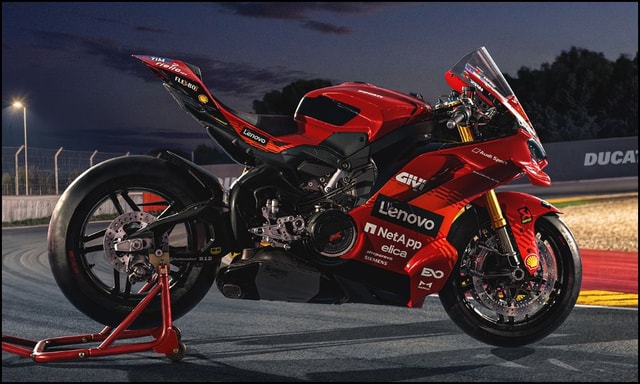 Jaiveer Mehra | Dec 21, 2025New Limited-Run Ducati Panigale V4 Marquez 2025 World Champion Replica RevealedSpecial edition Panigale V4 commemorates Marc Marquez's 2025 MotoGP Rider’s title.1 min read
Jaiveer Mehra | Dec 21, 2025New Limited-Run Ducati Panigale V4 Marquez 2025 World Champion Replica RevealedSpecial edition Panigale V4 commemorates Marc Marquez's 2025 MotoGP Rider’s title.1 min read car&bike Team | Dec 21, 2025KTM To Host First Adventure Rally In India In Feb 2026KTM also announced a third season of its KTM Cup for India, which commences in January 2026.1 min read
car&bike Team | Dec 21, 2025KTM To Host First Adventure Rally In India In Feb 2026KTM also announced a third season of its KTM Cup for India, which commences in January 2026.1 min read car&bike Team | Dec 20, 2025KTM 390 Adventure R To Be Launched In January 2026Bookings for the KTM 390 Adventure R are expected to open very soon, wit deliveries beginning in January 2026.2 mins read
car&bike Team | Dec 20, 2025KTM 390 Adventure R To Be Launched In January 2026Bookings for the KTM 390 Adventure R are expected to open very soon, wit deliveries beginning in January 2026.2 mins read car&bike Team | Dec 20, 2025BMW Motorrad India To Hike Prices By Up To 6 Per Cent From 2026The price hike will come into effect from January 1, 2026, and will be across the range of BMW two-wheelers and is due to the rupee’s sharp depreciation.1 min read
car&bike Team | Dec 20, 2025BMW Motorrad India To Hike Prices By Up To 6 Per Cent From 2026The price hike will come into effect from January 1, 2026, and will be across the range of BMW two-wheelers and is due to the rupee’s sharp depreciation.1 min read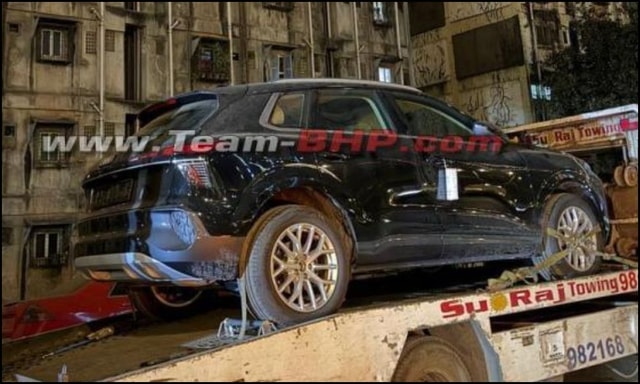 car&bike Team | Dec 19, 2025Next-gen Audi Q3 Spied In India Ahead Of Launch In 2026Third-gen Q3 made its global debut in mid-2025, getting notable tech upgrades and electrified powertrain options.2 mins read
car&bike Team | Dec 19, 2025Next-gen Audi Q3 Spied In India Ahead Of Launch In 2026Third-gen Q3 made its global debut in mid-2025, getting notable tech upgrades and electrified powertrain options.2 mins read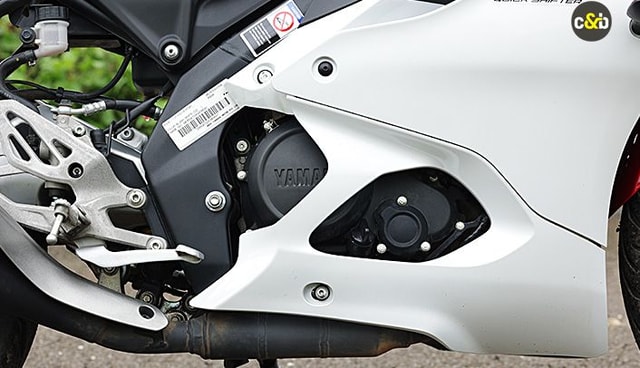 car&bike Team | Dec 19, 2025Yamaha YZF-R2 Name Trademarked In IndiaThe Yamaha R15, one of Yamaha India’s most popular motorcycle models, is likely to continue, even when the R2 finally makes it debut.1 min read
car&bike Team | Dec 19, 2025Yamaha YZF-R2 Name Trademarked In IndiaThe Yamaha R15, one of Yamaha India’s most popular motorcycle models, is likely to continue, even when the R2 finally makes it debut.1 min read
 Bilal Firfiray | Dec 19, 2025Maruti Suzuki e-Vitara Review: Worth The Wait?After a long wait, the first-ever electric Maruti Suzuki is here. It’s the e-Vitara, and it comes with a few promises. But arriving this late, is it worth the wait? Or is it a case of too little, too late?9 mins read
Bilal Firfiray | Dec 19, 2025Maruti Suzuki e-Vitara Review: Worth The Wait?After a long wait, the first-ever electric Maruti Suzuki is here. It’s the e-Vitara, and it comes with a few promises. But arriving this late, is it worth the wait? Or is it a case of too little, too late?9 mins read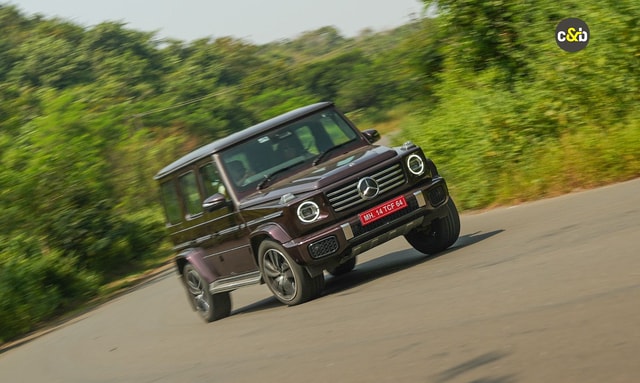 Bilal Firfiray | Dec 18, 2025Mercedes-Benz G450d: The Subtle Power of EvolutionThe Mercedes-Benz G 450d evolves subtly with more power, improved efficiency, and modern tech, while staying true to the timeless G-Class design. And character.4 mins read
Bilal Firfiray | Dec 18, 2025Mercedes-Benz G450d: The Subtle Power of EvolutionThe Mercedes-Benz G 450d evolves subtly with more power, improved efficiency, and modern tech, while staying true to the timeless G-Class design. And character.4 mins read Janak Sorap | Dec 11, 2025Harley-Davidson X440 T First Ride Review: Smarter and SharperHarley-Davidson has taken the X440 and given it a more focused and engaging twist. The result is the X440 T—essentially the same platform but updated in areas that give the motorcycle more appeal and riders more thrill.5 mins read
Janak Sorap | Dec 11, 2025Harley-Davidson X440 T First Ride Review: Smarter and SharperHarley-Davidson has taken the X440 and given it a more focused and engaging twist. The result is the X440 T—essentially the same platform but updated in areas that give the motorcycle more appeal and riders more thrill.5 mins read Shams Raza Naqvi | Dec 10, 20252025 Mini Cooper Convertible Review: More Colour On Indian RoadsThe updated Mini Cooper Convertible is set to be launched in the Indian market in the next few days. We drive it around Jaisalmer for a quick review.5 mins read
Shams Raza Naqvi | Dec 10, 20252025 Mini Cooper Convertible Review: More Colour On Indian RoadsThe updated Mini Cooper Convertible is set to be launched in the Indian market in the next few days. We drive it around Jaisalmer for a quick review.5 mins read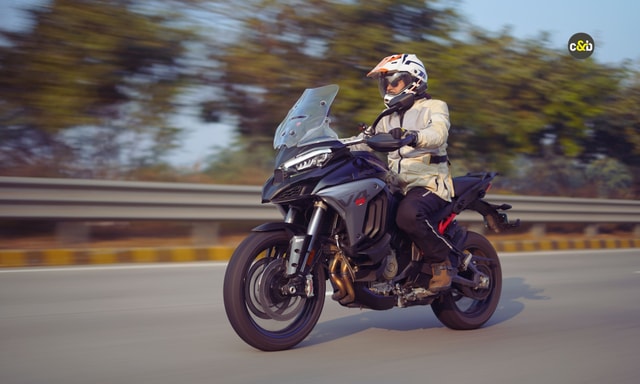 Preetam Bora | Dec 21, 20252025 Ducati Multistrada V4 S Review: Seriously Addictive!For 2025, the Ducati Multistrada V4 gets sharper, smarter and more sophisticated. We spent several days with the updated Multistrada V4 S to answer the big question – with a price tag north of Rs. 30 lakh, is it worth splurging?8 mins read
Preetam Bora | Dec 21, 20252025 Ducati Multistrada V4 S Review: Seriously Addictive!For 2025, the Ducati Multistrada V4 gets sharper, smarter and more sophisticated. We spent several days with the updated Multistrada V4 S to answer the big question – with a price tag north of Rs. 30 lakh, is it worth splurging?8 mins read



























































































































